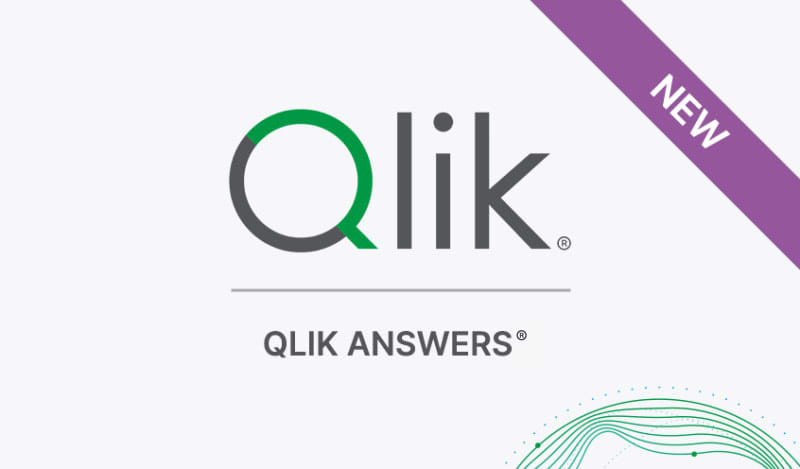With any new, transformative technology comes a fear of the unknown, as I explored in my first blog of a new series on generative AI. Companies are pulled between acting quickly to avoid being left behind and proceeding with caution to avoid major missteps. And while they are grappling with how to best move forward, they are being bombarded with new information on this topic every day - along with the latest vendor announcement tagging “GPT” at the end of their product and calling it the new, better thing (but often not actually releasing anything)…Is it even possible to cut through all that noise, and drive value for your business with AI, today?
My answer to this is yes; in fact, this is at play today throughout the Qlik eco-system, and it’s been quite exciting to hear about the new use cases our customers and partners are either exploring or already implementing with Qlik. This includes Harman who at QlikWorld in April, demonstrated an application of ChatGPT on top of Qlik to use natural language to drive high value insights with the Qlik analytics engine.
AI is not new to the Qlik universe and generative AI is not the only kind of AI which is beneficial. In fact, McKinsey predicts that “other applications of AI…continue to account for the majority of the overall potential value of AI”. Qlik first introduced AI in our products five years ago with natural language processing and generation, and today we support fully interactive search, chat, and natural language generation for internal data in 11 languages. In addition, our Analysis Types capability is a unique form of generative AI, allowing users to create an advanced analysis such as a clustering, forecasting, period-over-period, etc. in a few clicks – complete with AI-generated visualizations and NLG. Our AutoML engine is also now built into Qlik Cloud, delivering predictive analytics to support generative content such as key driver analysis, and more – and to date, 3 out of 4 of customers who try AutoML have deployed models on Qlik Cloud. So, while generative AI is the hot topic today, don’t lose sight of the fact that other forms of AI remain very valuable and are proven.
That is not to say we are not also investing in generative AI. Qlik is not only investing in it, but unlike other vendors who are only making announcements, we are delivering functionality to our products. Last week, we announced the availability of a new suite of OpenAI connectors to deliver a ChatGPT experience in Qlik Cloud.
This new release includes automation connectors alongside real-time analytics integration to enable users to request and embed generative AI content directly in your Qlik analytics experience. With this new capability, you can take advantage of the rich content offered by generative AI in a variety of ways, such as augmenting analytics with natural language insights from ChatGPT, synthesizing and combining third-party data into existing data models, and allowing users to ask questions in real-time, augmented with data from Qlik. The analytics connector constructs questions for OpenAI and our unique associative engine passes only relevant data relative to selections, in real-time, allowing users to get contextually relevant responses while minimizing cost and complexity. Automation connectors into OpenAI offer the ability for developers to send questions and receive responses and data sets as part of automation workflows. OpenAI integration works alongside our existing generative capabilities to expand context, drive broader insight, and engage with more users. Watch this video to learn more.
What use cases can you apply with this? The possibilities are endless, but here is my view on three great applications.
Use Case Example #1: Natural Language Insights
To get started, users can augment their analytics with natural language and incorporate third-party data into existing data models. With our analytics connector, users can ask a specific question by making a selection in their data and receive the information directly back in their sheet. Users can also augment existing data and KPIs with a narrative summary. For example, you might be interested in getting a summary of specific metrics around competitor’s recent financial performance, or a summary of their earnings calls. These natural language insights complement Qlik’s native natural language insights, which provide governed, trained responses based on business logic applied to your internal data.
Use Case Example #2: Sentiment Analysis
Another great use case is sentiment analysis, a process to determine if a piece of text, like a sentence or a social media post, expresses positive, negative, or neutral feelings. With our analytics connector, users can enrich text-based data sets like product reviews, surveys, or service tickets using OpenAI to generate sentiment analysis. Once identified as ‘positive’ or ‘negative’, our automation connector can take it further by asking for suggested responses to the negative tickets and adding those suggested responses from OpenAI directly back into a CRM, service database, or an analytics application for end user usage.
Use Case Example #3: Real-Time Question & Answer
The ability to ask questions and get answers in real time is another great use case. Leveraging our connectors, users can ask any question they want and get contextually relevant content with the most up-to-date responses available from OpenAI. Combined with small subsets of data delivered by the Qlik engine in real-time, we can greatly enrich the context and value of your internal analytics. Imagine for example a scenario where a customer service representative can generate relevant information about their selections in real-time, as the interaction with a customer is happening. That’s a powerful application indeed.
Ultimately, as I recently discussed on the Data Strategy Guru’s podcast, at this stage new use cases are discovered every day, so the sky is the limit! And thanks to Qlik’s open platform and integration approach, our customers and partners have the flexibility to identify and take advantage of the many valuable ways to utilize generative AI with their analytics, with the tools to innovate and build their own, state-of-the-art solutions. And that also comes with the ability to maintain complete governance and control over the relationship with OpenAI – including the data they send and how they choose to use it within Qlik Cloud.
Today, Qlik offers the most complete and integrated solution for augmented analytics available, with capabilities that deepen insight, broaden access, and drive efficiency for users of all skill levels. This connector suite is the next evolution on this journey, and the first in a planned set of services and solutions that will leverage generative AI to help you drive more use and value of your data. We previewed prototype capabilities at QlikWorld, and will bring several enhancements over the coming months, including enhanced generative AI expression, enhanced NLG, key driver analysis, and Microsoft Teams integration. Stay tuned for more…
Add to that the ability to harness data from any source, enhance quality, and provide superior governance and security, and you have a great foundation to ensure your success with generative AI. I plan to explore this more in a future post.
As I said when I stood up on stage in front of our customers and partners at QlikWorld, “you built it” – your feedback has helped fuel our innovation pipeline for the last thirty years, and that continues today as we bring new enhancements to our AI-powered platform. Thank you to all the customers who have already engaged with our research team on generative AI.













































